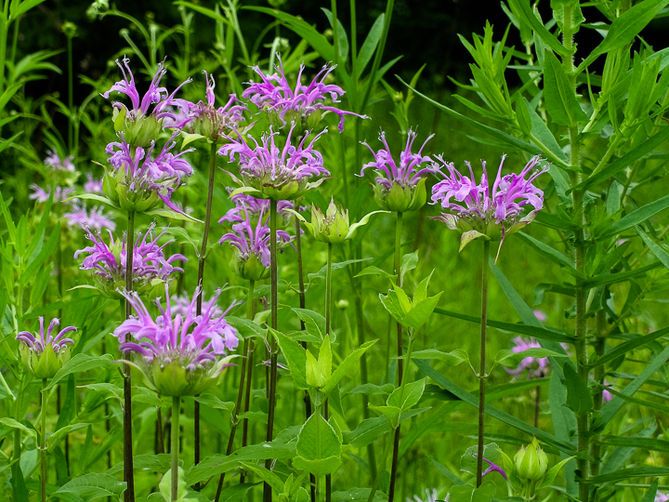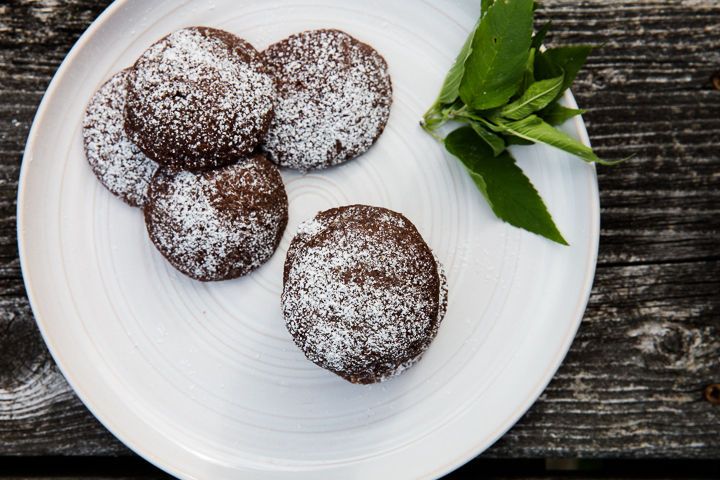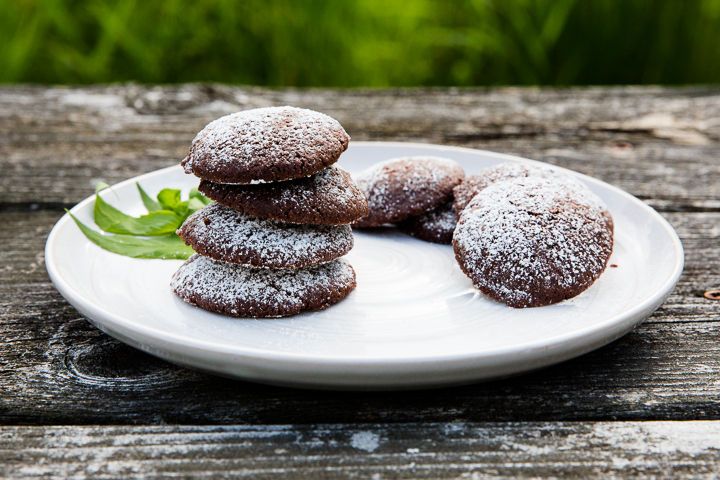Foraged vegetables are always more fun to cook. So our resident forager, Tama Matsuoka Wong, is introducing us to the seasonal wild plants we should be looking for, and the recipes that will make our kitchens feel a little more wild.
Today: A starter plant, which you can keep in your backyard, for those wary of foraging -- plus a chocolate cookie to bake it into.

When I first found wild lavender bergamot growing in my meadow, I ran inside to quickly look up bergamot, and then lavender -- but I found that this plant was neither. Long prized by Native Americans as an herbal remedy and garnish, sprinkled on meats and in beverages, lavender bergamot (also known as wild bergamot, or Monarda fistulosa) is a native plant in the mint family, characterized by square stems and leaves that sit exactly opposite each other along the stem.
This plant can be found wild throughout the United States (except for California and Florida), filling the sunny edges of fields with beautiful crowns of lavender flowers in the summer. However, it is also a great plant for a container garden or edible garden.

A number of people would love to forage for wild plants, but they don’t have the space or they worry about misidentification -- so I like to recommend buying a potted lavender bergamot plant. If you want to plant your own, it's best to buy from a responsible native plant nursery rather than pulling out a wild plant. If you cannot find lavender bergamot locally, you can easily order it online, from sites like Prairie Nursery.
Lavender bergamot is perennial, so it will die back in the winter and return every spring. It's very drought- and pest-resistant, so it's quite easy to maintain. And as the plant spreads, you can keep it tamed by harvesting some of the young leaves before the light purple flowers bloom in the summer. Its lovely flowers also attract butterflies, bees, and hummingbirds.

The plant's leaves have an herbal, clove-like flavor that pairs well with fruits such as strawberries or peaches -- but I love pairing them with chocolate. Yossy and I recently had fun making some delicious lavender bergamot chocolate cookies with pastry chef Sarah Villamere. Sarah incorporates the herb into the sugar, to spread the flavor evenly through the cookie batter. The herb gives a savory quality to an otherwise sweet cookie, much like the way that salt complements the sweetness of caramel.

Wild Bergamot Chocolate Cookies
Make 2 dozen
1 1/2 cups lavender bergamot tips (pluck the top few inches of the plant: you want the leaves and the tender, not woody, stems)
3/4 cup granulated sugar
1 1/4 cups unsalted butter, cubed, at room temperature
3/4 cups brown sugar
2 eggs
1 3/4 cups flour
1 1/4 cups cocoa powder, sifted
2 teaspoons baking soda
See the full recipe (and save and print it) here.
Note: When foraging, always choose high-quality landscapes (not next to the highway or on post-industrial or sprayed sites), and make sure to obtain permission if it is not your own yard. If possible, go out with an experienced forager. We assume no responsibility for any adverse effects from misidentification or incorrect use of featured wild plants. For more information and identification advice please consult us at meadowsandmore.com.
Photos by Yossy Arefi





See what other Food52 readers are saying.